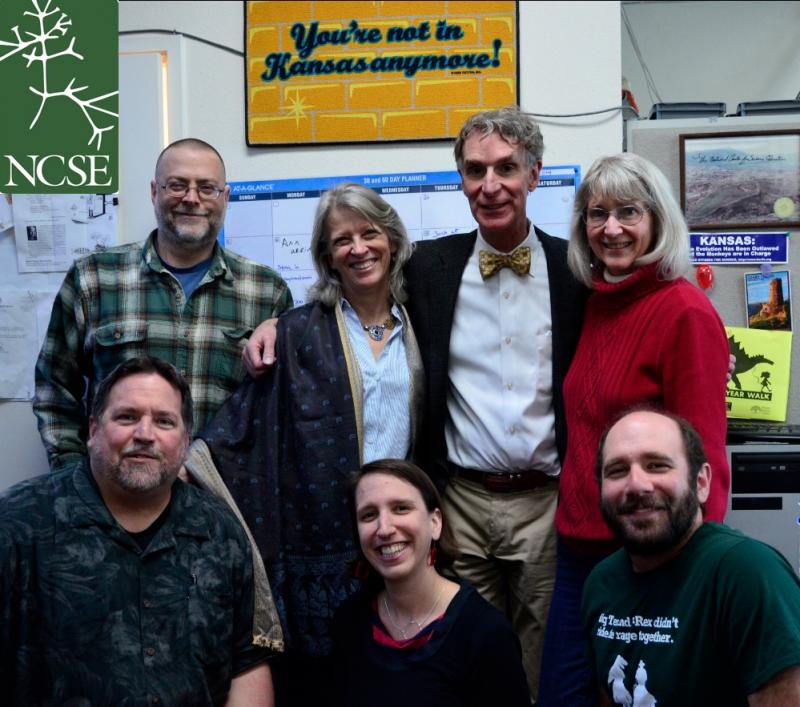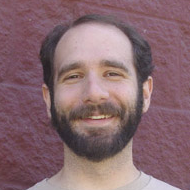In tonight’s debate between Bill Nye and Ken Ham, the Science Guy went on stage equipped with the most vital tool of all in any oral debate over evolution and creationism: a showman's flair, developed over three decades of experience explaining science to the broad public.
Of course, he also had the science on his side, which doesn't hurt. But it isn’t a guarantee of anything in a stage debate: competitive debaters are judged by their ability to argue either side of a question. Debate is a tool for showing who's a better orator, not necessarily who's right.
And Ken Ham is no mean orator, usually. Yet, although he's spent a lifetime attacking evolution on stage, it seemed like he forgot to eat his Wheaties (or Weetabix) that morning. His presentation was largely drawn from his stock presentations, sometimes rambled far afield, and often raced by so quickly that it was hard even to know what he was saying. He also relied a lot on video clips of fellow young-earth creationists, as if he weren’t confident in his ability to sell his own message.
Nye prepared well. On the way to the venue, he picked up a piece of limestone from the roadside, with a fossil in it, to show how the rocks beneath the auditorium themselves show the evidence of evolution. He opened by undercutting the core of Ken Ham's claim to authority, emphasizing that Ken Ham bases his claims not on the empirical evidence, but on a very particular reading of Genesis. And that way of reading Genesis is very specific to Ken Ham, not to most of the world’s religious people, or even Ham’s fellow evangelicals. He never stopped emphasizing that Ham’s theology is an outlier, and that he doesn’t speak for religious people, Christians, evangelicals, or even all creationists.
Throughout, Nye did a great job keeping the focus on the failures of Ken Ham's creation model, and the key ways in which it fails to provide any sort of viable explanation for the world around us. A good, viable model has to make real predictions, he emphasized; those predictions can't be wrong, and a viable model has to be of practical value. In various ways, Ken Ham's creation model fails on all three prongs.
Listing a host of lines of evidence that indicates a history of the Earth extending back thousands of times longer than Ken Ham's creation model would allow, Nye observed that any one of these would seem to disprove the major prediction of Ken Ham's creation model. If the Earth is less than 6,000 years old, why are there ice cores from Antarctica with over 600,000 annual layers? Why are there trees with over 10,000 annual rings? Why weren't those trees scoured away by the Flood which Ken Ham's creation model insists covered the Earth for a year, and which is supposed to have moved with such force as to have carved out the Grand Canyon?
Speaking of the Grand Canyon and the Flood, Nye asked why the Flood would only have carved out one Grand Canyon, rather than dozens on each continent? Why do you see fossils in a very specific order in the Grand Canyon and everywhere else, without any animals trying to crawl out of the floodwaters? Ken Ham’s creation model can’t explain it.
Nor can Ken Ham's creation model predict delicate fossil trackways and worm burrows preserved deep inside the Canyon, in rocks that it claims settled out and turned to rock during the year before the Flood receded.
Ken Ham's creation model doesn't explain the world after the Flood either. It claims all humans alive today descend from eight people on the Ark, and that the sixteen million species alive today all rapidly evolved from about 7,000 pairs on the Ark. That makes the Ark the biggest, most-cramped zoo ever, and the most poorly-staffed. It means that Ham is predicting a staggering rate of speciation, roughly twenty-five new species every day. You might see a brand-new species of robin in your front yard tomorrow, if that rate of speciation is correct.
And if Ken Ham’s creation model is right, it should be easy to see the differences between the separately created “kinds.” But showing an image of dozens of fossil hominid skulls, Nye asked where the line between humans and apes could be found. Not only was the audience unsure, but even creationists don't agree where you'd find the line. Not what Ken Ham’s creation model would predict, but exactly what you'd expect if humans and apes share common ancestry.
If Ken Ham’s creation model is right, why do we find the cosmic background radiation, an echo of the Big Bang, exactly as predicted by theory, and which lets us precisely estimate the age of the universe? Ken Ham’s creation model couldn’t predict it, but astronomy based on real science does.
Nye moved through his examples so quickly that you might say he launched his own "Gish gallop" against Ham. Then he made the crucial point that Ken Ham's creation model requires us to reject basic science we all rely on every day. The radioisotope dating methods Ken Ham dismisses are based on the same basic physics that nuclear medicine relies in to save lives. Is it a coincidence, Nye asked, that there are no training programs in nuclear medicine available anywhere in Kentucky?
The same insights from evolution and geology that let us predict and find fossils like Tiktaalik also guide us to fossil fuel deposits. Ken Ham’s creation model predicts nothing of scientific value, and would force us to cast away the knowledge that powers our society, saves lives, and prepares us for the future.
Nye closed his presentation with an impassioned appeal to the values that made our nation great. The US Constitution exhorts our government and our people to promote the useful arts and sciences. That means promoting evolution, not Ken Ham's creation model.
It was a strong presentation, and one that Ken Ham had a hard time addressing. Ham’s responses were scattershot, too fast, and often confused. He obsessed over technical details of his model, denied that it was indeed his model, and fell back on his standard presentation spiel, whether or not the spiel related to anything Nye had said.
How did Nye manage to do so well? A lifetime of experience and a passionate love of science surely played important parts, but I like to think this group helped a lot, too.

That’s Nye in the middle, flanked by Ann Reid and Genie Scott (NCSE’s current and former executive directors, respectively) and NCSE deputy director Glenn Branch. In the front row, you see Steve Newton (who managed the photography), Minda Berbeco, and me. We spent a Saturday with Nye in our offices in Oakland, talking through Ken Ham’s likely angles of attack, and the most compelling way to address his model of creation and its manifest flaws. Nye seems to have taken a number of our suggestions, and even used some slides we gave him. I’m sure he’d have done wonderfully either way, but I like to think our suggestions helped him reach people tonight who might not otherwise been ready to hear what Bill Nye had to say about the power of science and of evolution.

